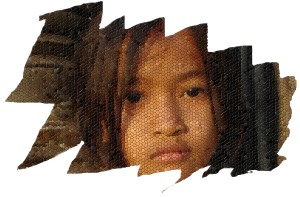Aztec Children
The lives of Aztec children are fascinating in many respects. To understand how children fit into Aztec culture, and how they were honoured, we should go right back to the beginning... even before the children were born.
Birth
Since warfare was glorified by the Aztecs, it was even used to symbolize childbirth. The baby was a "captive" in the womb, struggling to enter the world. Women who died in childbirth were glorified similarly to warriors who died in the battlefield and honored for their courageous efforts.
A hymn for a new child sung to the goddess of childbirth, found in the Codex Florentino, said:
Down there, where Ayopechcatl lives, the jewel is born, a child has come into the world.
It is down there, in her own place, that the children are born.
Come, come here, new-born child, come here.
Come, come here, jewel-child, come here.
A soothsayer then came to the home of the newly born child to study the astrological significance of the child's birth, down to the exact day and minute of the child's entrance into the world. A birth was followed by rituals and lots of celebrating.
Aztec children and their Parents
 |
All of the evidence is that Aztec parents loved their children deeply. We know of one recorded instance of a father saying to his boy, "Nopiltze, nocuzque, noquetzale", which translates into "Sweet son, my jewel, my precious feather".
However, in matters of discipline, both parents ruled over their Aztec children with a firm hand. Until a child was eight, it seems that the preferred disciplinary action was just a verbal scolding. Aztec children were raised with care by their parents, who made certain that their children knew their responsibilities and had command over the society's needed life skills.
Each child was warned against gambling, gossiping, thieving, and drunkenness.
When older children were bad, they could have a painful punishment. It's known that one of these punishments could take the form of parents holding a child over a chili pepper fire where they forced them to inhale chili pepper smoke, which burned their eyes, sinuses, mouths, and lips.
Chores and school
All older children were expected to help with chores around the house and in the garden in addition to attending school.
The Macehualtin--the class of merchants, peasants, and artisans--children went to a local school known as the telpochcalli where they were taught basic, elemental occupational skills, basics of warfare, civics, and elemental history and religion. Boys and girls attended different schools.
Some Macehualtin children who were gifted and talented got sent to a calmecac. The calmecac was also where children of noble birth, the Pilli, went to school and it was run by priests who taught government and the all-important religious concepts. At the calmecac students also learned Aztec history, astronomy, letters, and poetry.
Boys went to the calmecac when they reached age 15. If they did not attend this school, then they went to the cuicacalli, which was a junior military academy. All of the boys were trained in war and there was heated rivalry between different academies that often led to fights. While there were several professions open to non-working-class men, including priest, bureaucrat, and doctor, the life of a warrior won the most glory.
Aztec girls received more home schooling than boys. They began learning to weave at age four and to cook at age 12. Female education was more or less preparation for marriage, but noble girls spent a year when they were 12 or 13 attending the priestesses in the temple; some would go on to become professional priestesses.
Women had little direct influence in public affairs and politics, but in private affairs, it was a different story altogether. Although men were the official heads of households, women often ran businesses out of the house, and they had to be especially good at the administration of household finances if they were noble, since the men would often be away as warriors, running affairs of state, or making house calls as doctors.
More about classes and society
Games and song
Aztec children played with marbles, stones, and the bow and arrow. When they became teenagers, they might play Ullamaliztli--the legendary Aztec ball game--and the board game Patolli. Learn more about games for Aztec children
Aztec children also learned the deep importance of music, which permeated the entire culture. Children would practice musical instruments both at home and in school, and between the ages of 12 and 15 they would learn many important Aztec national songs.
Marriage
The teenage years were also marriage years for females, although the males they married were usually in their 20s.
In many respects, the lives of Aztec children mirrored our own children's today. But you might notice some differences, for better or for worse, in national pride, parental disciple, and a sense of individual responsibility.
More about Aztec society and family
More on Aztec children